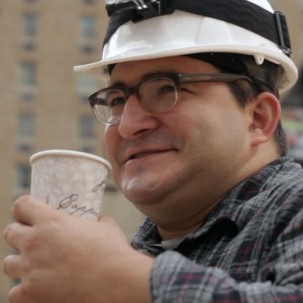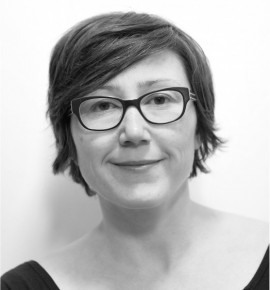Date/Time
Date(s) - October 5, 2017 - December 15, 2017
12:00 am
Location
Gregory Allicar Museum of Art, University Center for the Arts
October 5 – December 15, 2017
 DAVID BROOKS is internationally known for an artistic practice that considers the relationship between individuals and the built and natural world, while also questioning how nature is perceived and utilized. His work has been exhibited nationally and internationally in both solo and group exhibitions that examine the environment and sustainability.
DAVID BROOKS is internationally known for an artistic practice that considers the relationship between individuals and the built and natural world, while also questioning how nature is perceived and utilized. His work has been exhibited nationally and internationally in both solo and group exhibitions that examine the environment and sustainability.
Weld County, which arguably has the densest number of active fracking wells in the country, is most shocking not in this particular fact, but more so in the lack of visual evidence of such a foreboding truth. Ranch houses, playgrounds, charming school grounds, big skies and ample amenities for a comfortable suburban life all deny the reality of what lies beneath this masterfully crafted image of normalcy. A map illustrating the underground network of active gas extraction lines reveals a sprawling, tightly-knit mesh of export pipelines sitting just below the playgrounds, carpeted living rooms, stocked grocery stores, and manicured front lawns. This super infrastructure is something usually placed deep in the desert, under the ocean, or otherwise marginalized, so as to limit human contact with its dangers. But in Weld County, the domestic, and the everyday come in intimate proximity to the inhuman-scaled industries of resource extraction.
How we see the landscape mirrors how we inhabit the landscape and ultimately how we consume and shape the landscape. It would follow that how we see the landscape is a reflection of the guiding ideologies of our distinct time and place. Case Study: Weld County, CO consists of re-assembled 3D prints of real homes, all lying within one hundred feet of active fracking well pads in Weld County. Image scans were taken only from what was observable from a pedestrian’s point of view, from sidewalks, roads or public paths. This restricted approach to the scanning process presented anomalies within the modeling program. When the consecutive images were assembled to form a 3D model, the software unpredictably supplemented missing information or omitted existing information. In some cases the sky folded into rooflines and exterior space was mistaken for interior space. Such deformations make evident the disconnect between our actions and how we perceive them. This exhibition looks at how we normalize our impact on the natural world as well as the perceived consequences to our own health.
Case Study: Weld County, CO would not have been possible without the discerning eyes of Emily Boutilier Sullivan and Kyle Singer and their keen efforts in scanning the houses used here as case studies.
Brooks visited CSU in the fall of 2016 to work with Professor Erika Osborne’s ART680 Art and the Environment class and to accompany the class on a field trip to examine hydro fracturing well pad sites and the proximity of these sites to homes, schools, churches and playgrounds in Northern Colorado. This work in this exhibition responds to that trip and to the high incidence of hydraulic fracturing throughout our state.
 Exhibition Curator Erika Osborne. Every fall I take my Art and Environment students to Weld County. It is one of seven field trips the students take during the semester-long course. In the fall of 2016, we were lucky enough to have David Brooks join us. Together we explored suburban neighborhoods, playgrounds, shopping centers, compressor stations, drill rigs and spill sites – all woven together in tight proximity. We could smell the gas and we could taste it. This field trip deeply affected my students, as it did David Brooks. The work in Case Study: Weld County is a manifestation of the shock we all felt that day when we were confronted with our consumption and its effects on our very community.
Exhibition Curator Erika Osborne. Every fall I take my Art and Environment students to Weld County. It is one of seven field trips the students take during the semester-long course. In the fall of 2016, we were lucky enough to have David Brooks join us. Together we explored suburban neighborhoods, playgrounds, shopping centers, compressor stations, drill rigs and spill sites – all woven together in tight proximity. We could smell the gas and we could taste it. This field trip deeply affected my students, as it did David Brooks. The work in Case Study: Weld County is a manifestation of the shock we all felt that day when we were confronted with our consumption and its effects on our very community.
Not only does Brooks’ installation make the invisible dangers of extraction visible, the very precariousness he proposes stands as a metaphor for the large-scale impacts we impose on our planet. And, as Brooks so succinctly states, “when the very health of our biosphere is entering into a measurable spiral of collapse, how we perceive it and thus how we inhabit and consume it is of paramount importance”. Take heed.
This project, part of the Critic and Artist Residency Series, is made possible by the FUNd at CSU. This project is also sponsored by Fort Collins Fort Fund and a grant from the Lilla B. Morgan Memorial Endowment, which works to enhance the cultural development and atmosphere for the arts at Colorado State University. This fund benefits from the generous support of all those who love the arts.